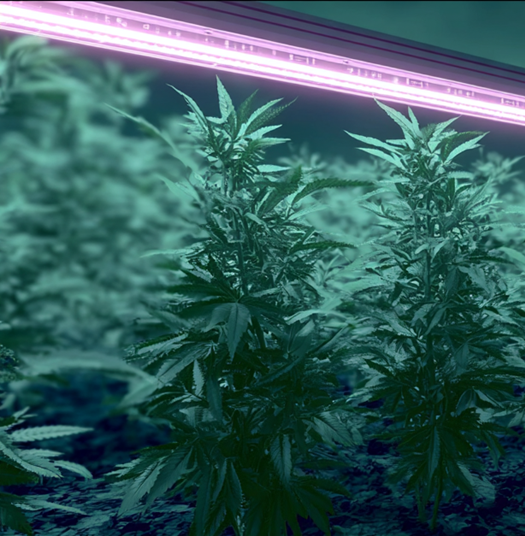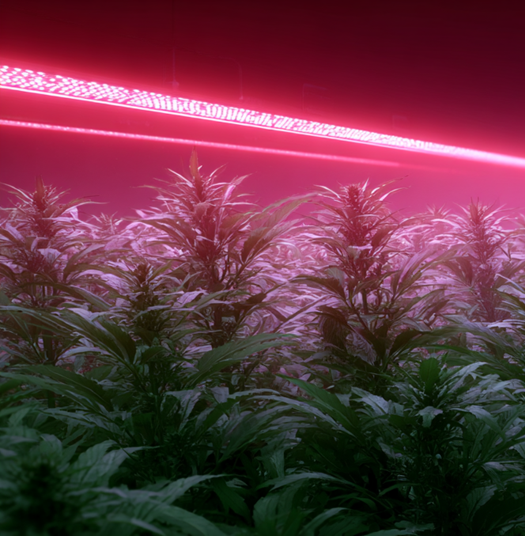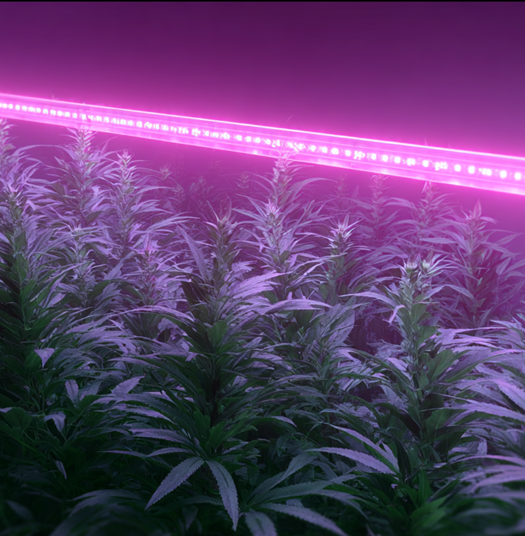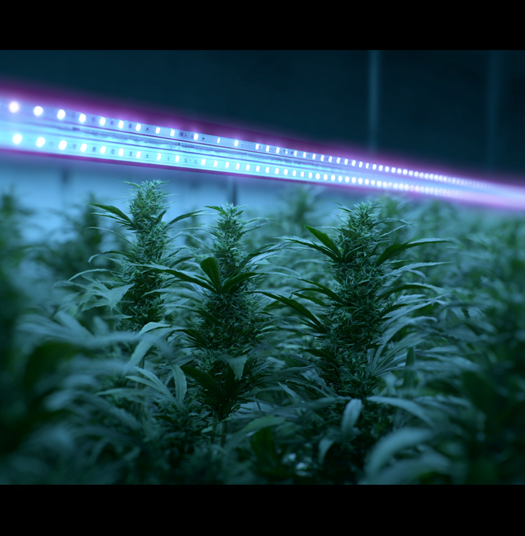Close-Canopy Lighting
Indoor cultivation has long been defined by a simple rule: keep your lights high and your canopy low. Close-canopy lighting turns this paradigm upside down. With modern low-heat, targeted-spectrum LED systems—like like LumaG's PoE Lighting—growers can safely bring lights within an inch of the plants themselves. Instead of stretching toward a distant fixture, plants grow directly into the light. In many cases, branches and leaves even wrap around the rails, producing what’s described as a hugging effect.Inches from Greatness: The Close-Canopy Lighting Advantage
Close-canopy lighting—where fixtures are positioned just inches above the plant canopy—is transforming cannabis cultivation. Unlike traditional HID and full-spectrum setups that hang 12–24 inches overhead, close-canopy lighting runs cool enough to sit nearly flush with the canopy. With LumaG’s Power over Ethernet (PoE) system, lights operate at 72 °F and deliver about 600 PPFD at the leaf surface. This lets plants “hug the light” rather than stretch away from it.

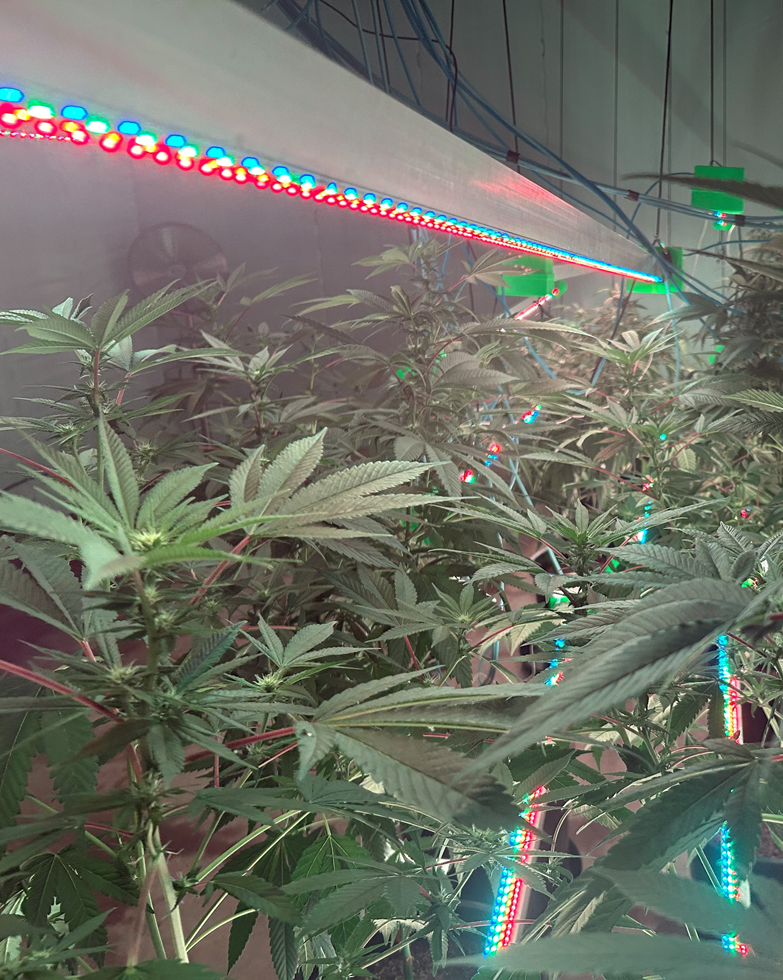
For cannabis, managing light distance at each growth stage is key. Seedlings and clones thrive at 100–300 PPFD, developing sturdy root systems without stress. As plants move into vegetative growth, light intensity can rise to 300–600 PPFD, encouraging compact internodes and dense branching. During early flowering, 600–900 PPFD supports explosive bud set and resin production. Late flowering caps at 900–1000 PPFD, while the ripening stage drops to 600–800 PPFD to preserve cannabinoids and terpenes.
Because light is delivered close and evenly, photons penetrate deeper into the canopy, reducing shadowing and producing uniform flower sites. This efficiency minimizes wasted energy and reduces HVAC demand, since fixtures don’t contribute excess heat.
The benefits extend beyond yield: tighter node spacing, sturdier stems, and enhanced terpene and cannabinoid profiles are all outcomes of close-canopy management. For growers chasing quality, consistency, and lower operating costs, inches truly make the difference.
PoE Lighting at 72 °F Isn’t Just Safer — It’s Better for the Plant.
-
Lights Within an Inch of the Canopy
The Hugging Effect
Because LumaG fixtures run at room temperature, they can sit just an inch above the canopy. Instead of stretching away from the heat, cannabis plants grow directly into and around the light, maximizing photon absorption and reclaiming wasted vertical space for yield.
-
Uniform, Deeper Light Penetration
Every Bud Site Counts
Close placement ensures light reaches lower branches and interior bud sites that would otherwise stay shaded. This creates even coverage across the canopy, resulting in balanced growth, denser flower development, and higher-quality cannabis from top to bottom of the plant.
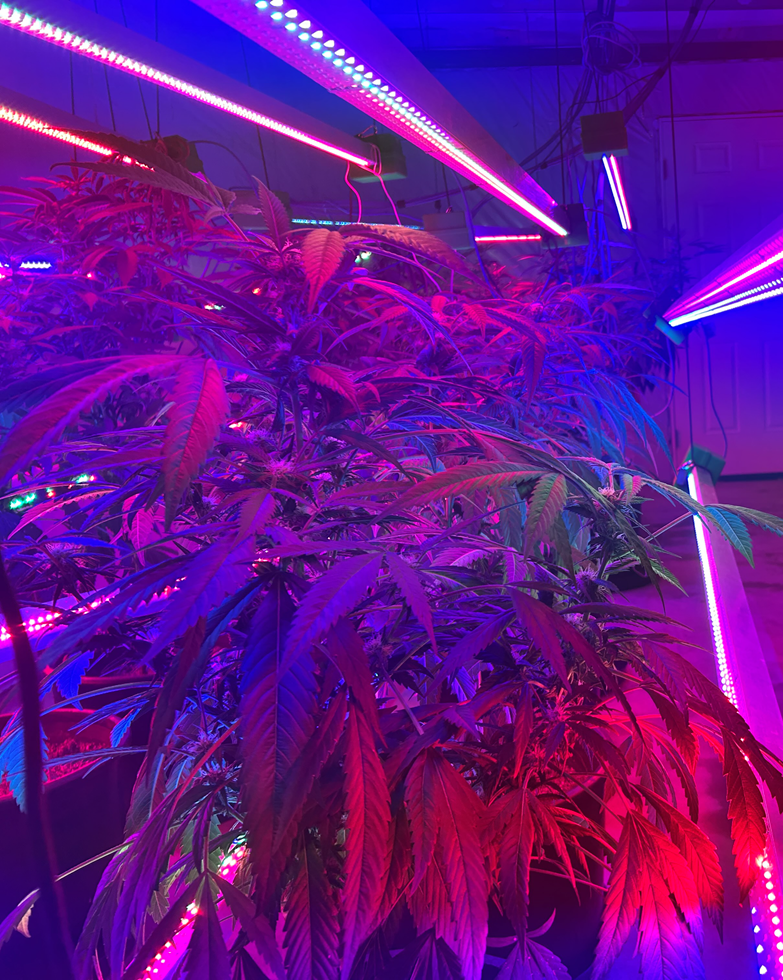
-
Lower Energy and HVAC Costs
Efficiency That Pays Off
Cool-running PoE fixtures eliminate excess radiant heat, reducing the need for oversized cooling systems. Energy use shifts from climate correction to plant growth, lowering utility bills while making indoor cultivation more efficient and sustainable without sacrificing performance.
-
Higher Potency and Flavor
Protecting What Matters Most
Stable lighting preserves delicate terpenes and supports cannabinoid production, leading to more aromatic, flavorful, and potent cannabis. Without heat degradation, growers can reliably produce high-quality buds that meet consumer demand for premium taste, potency, and overall experience.
-
Stronger, More Compact Plant Structure
Built for Bigger Yields
Cool, close-canopy conditions prevent heat-driven stretching, encouraging tighter internodal spacing and stronger stems. Plants grow bushier and sturdier, capable of supporting heavier flowers. This compact morphology increases usable yield while maintaining overall plant health and structural integrity.
Close-Canopy Lighting: Redefining Indoor Cannabis Cultivation
Traditional grow rooms rely on high-intensity lamps suspended well above the canopy to prevent heat burn. The result? Light lost to distance, uneven penetration, and high HVAC costs. Close-canopy lighting flips that model. With modern low-heat LEDs like LumaG’s PoE rails, fixtures run under 72 °F and can be placed within an inch of the plants. Cannabis no longer stretches toward light—it grows around it.
This approach syncs seamlessly with cannabis’ growth cycle. Seedlings and clones stay compact under 100–300 PPFD, while vegetative plants expand vigorously with 300–600 PPFD delivered inches from the leaves. As flowering begins, photon density ramps up to 600–900 PPFD, stimulating dense bud formation. Late flowering tolerates 900–1000 PPFD, but unlike high-wattage systems, heat stress isn’t an issue. In the ripening stage, dialing back to 600–800 PPFD preserves terpenes and cannabinoid content.
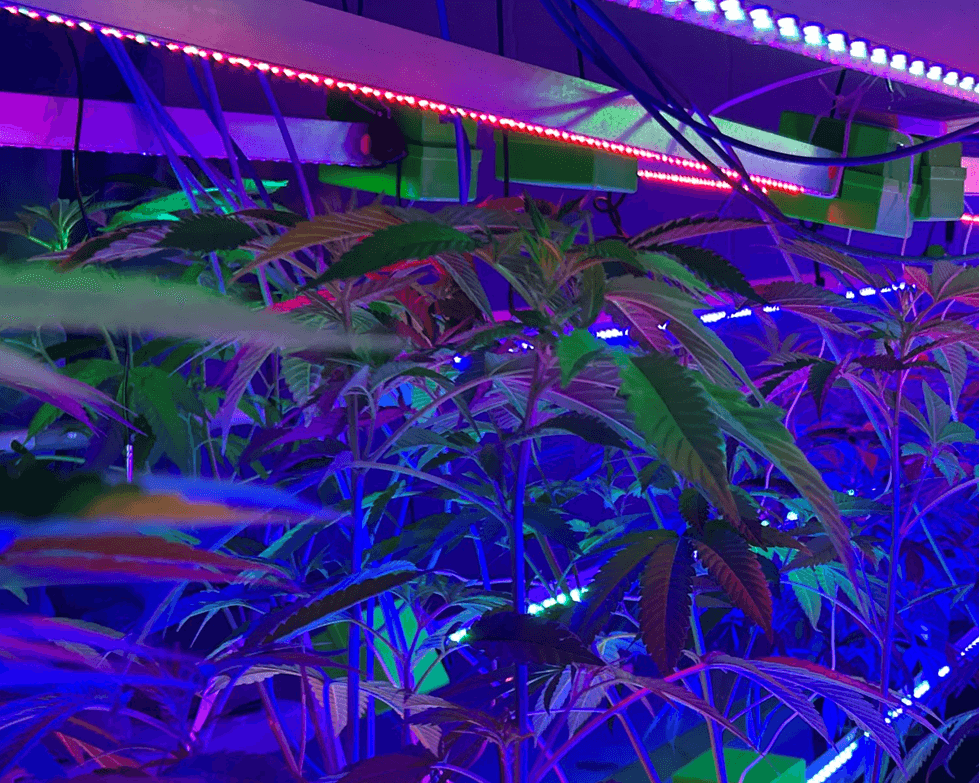
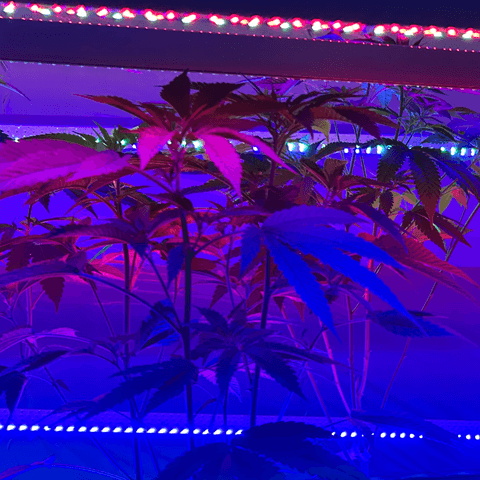
The advantages go beyond efficiency:
-
Uniform canopy coverage ensures all bud sites develop evenly.
-
Better penetration delivers light to lower branches and hidden bud sites.
-
Reduced energy waste improves profitability.
-
Stable climate conditions lower the risks of mold, mildew, and stress.
Perhaps the most striking benefit is the “hugging effect”—plants grow directly into and around the rails, capturing every photon. What was once wasted space between light and canopy is now reclaimed for yield.
Close-canopy lighting isn’t just efficient—it’s a smarter, more sustainable path to producing potent, aromatic, and high-quality cannabis indoors.
Growing Cannabis with PoE Lighting at 72 °F
One of the greatest challenges in indoor cannabis cultivation has always been managing heat from grow lights. Traditional HID and even many LED fixtures run hot, forcing growers to keep them 12–24 inches above the canopy. That distance wastes photons, demands extra HVAC, and risks leaf burn if plants stretch too close.
Power over Ethernet (PoE) lighting changes the equation. With modern low-heat LEDs like LumaG’s PoE rails, fixtures never exceed 72 °F—the same temperature range growers aim to maintain in their rooms. This innovation eliminates the danger of heat damage and opens the door to a revolutionary strategy: close-canopy lighting.
When cannabis is grown under low-heat lighting (like PoE LEDs that never exceed ~72 °F), you don’t just avoid the long list of heat-stress problems you outlined. You also see positive changes in plant morphology and chemistry that help maximize yield and quality.
Plant Growth Advantages of Low-Heat Growing
Tighter Internodal Spacing
Without heat stress driving “stretching,” plants keep shorter distances between nodes. This leads to bushier, more compact growth with more bud sites per vertical foot.
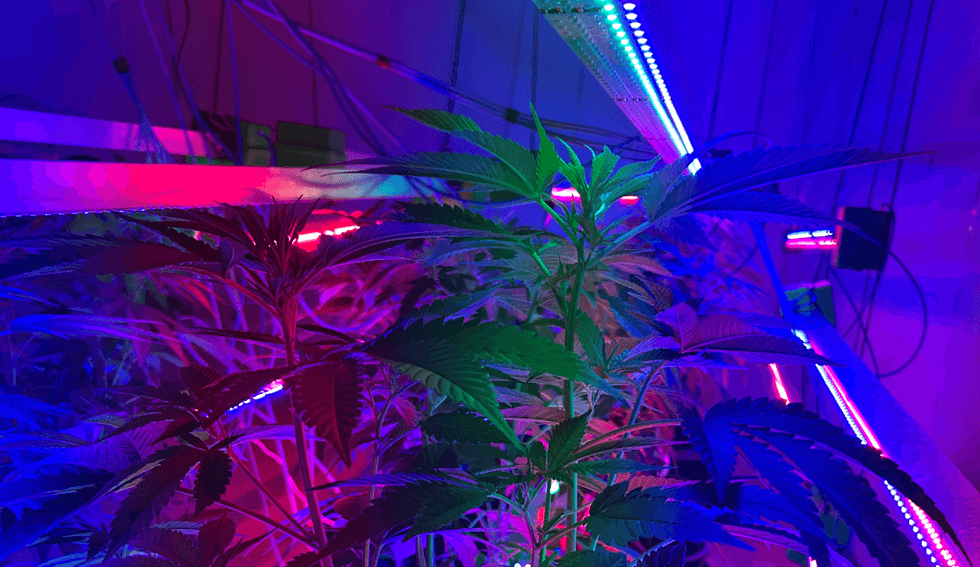
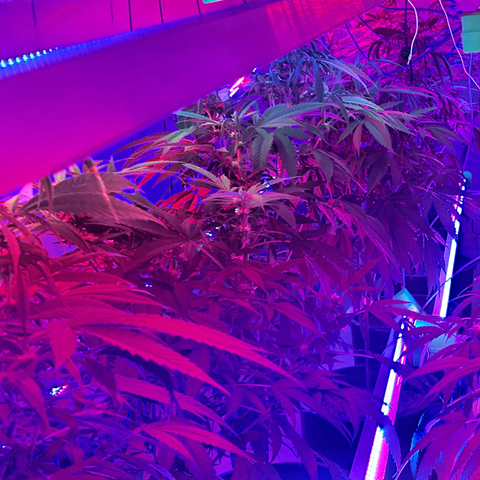
Stronger Stems and Branches
Cool, stable lighting allows the plant to allocate resources to stem thickening rather than stretching upward. The result is sturdier branches capable of holding heavier flowers.
Healthier Leaf Structure
Leaves stay broad, flat, and dark green instead of curling, canoeing, or bleaching. This maintains maximum surface area for photosynthesis throughout the grow cycle.
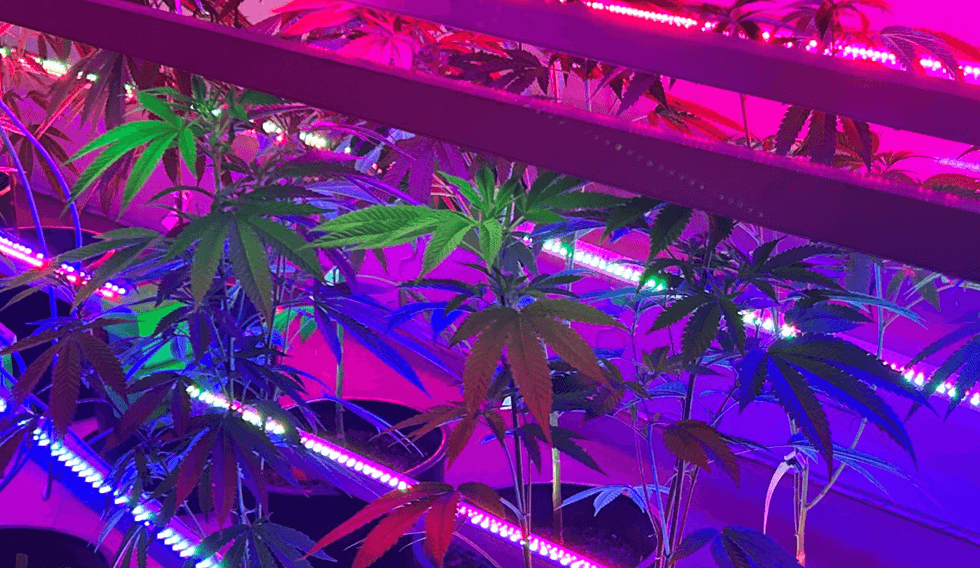

Uniform Canopy Development
Cool, close lighting provides even distribution, which prevents one section of the canopy from overheating and stretching while another stays shaded. Every bud site matures at a more consistent rate.
Reduced Stress Hormone Production
Excessive heat triggers plant stress responses (ethylene, ABA, and stress proteins) that divert energy away from growth. Low-heat environments allow cannabis to stay in full photosynthetic mode, maximizing biomass and flower production.
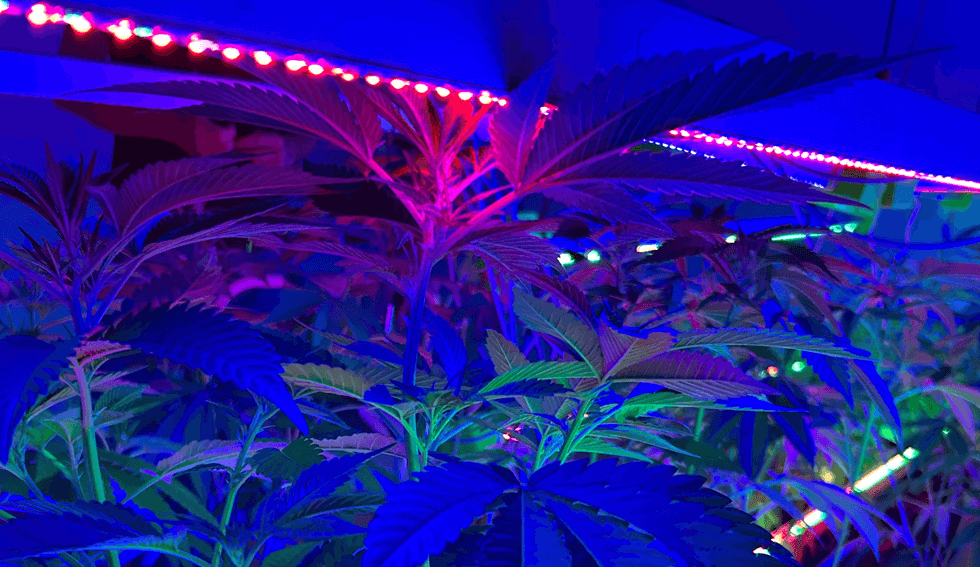
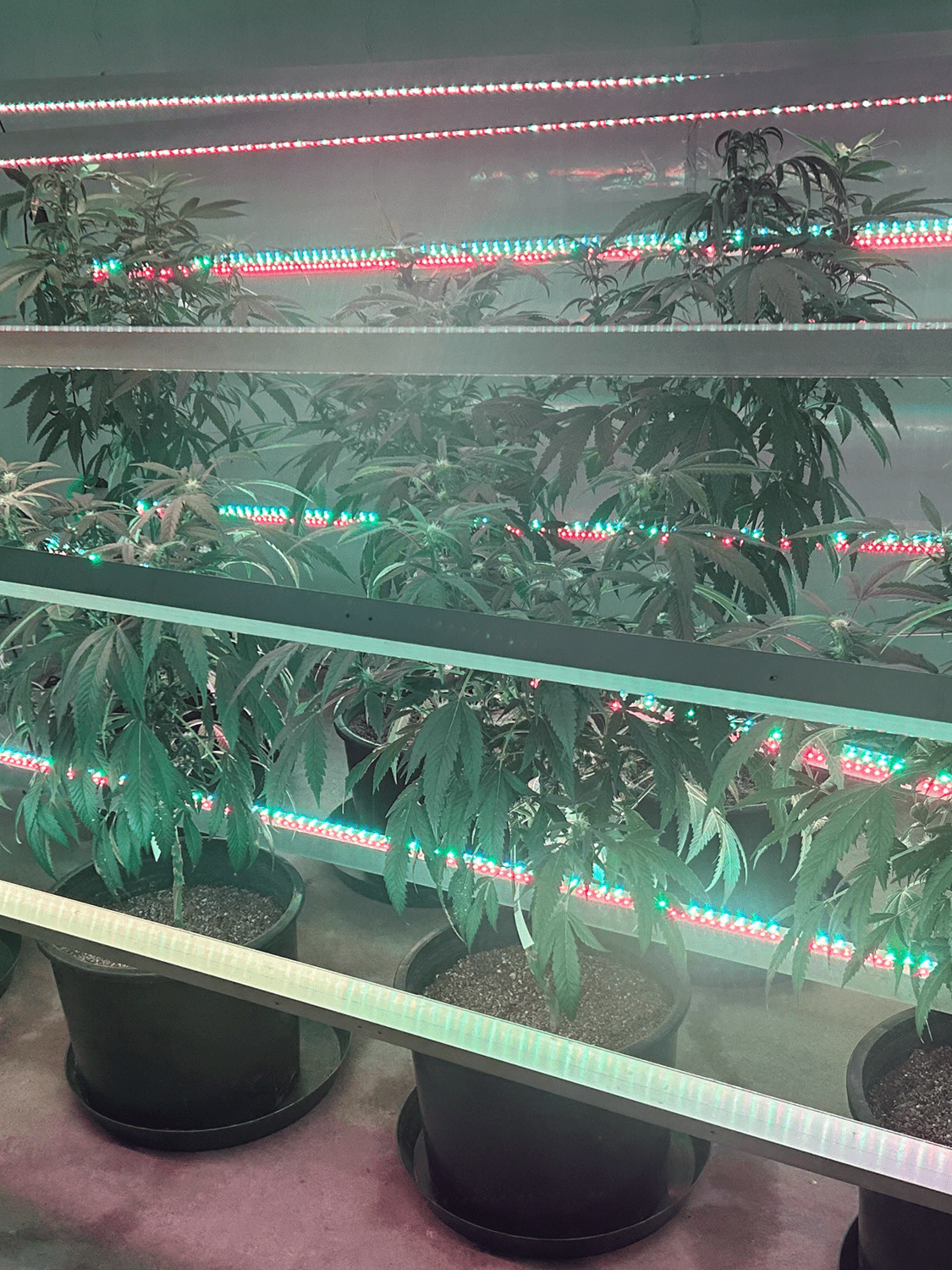
Cool-Grown, High-Quality Results
-
Denser Buds: Without foxtailing or bleaching, buds stack more tightly and finish with ideal density.
-
More Resin Production: Cool, stable conditions favor trichome development, boosting THC and terpene levels.
-
Preserved Aromatics: Terpenes are volatile—heat drives them off. Low-heat lighting preserves terpene profiles, enhancing flavor and aroma.
-
Lower Risk of Hermaphroditism: Plants are less likely to be pushed into survival mode, ensuring a pure, seedless harvest.


